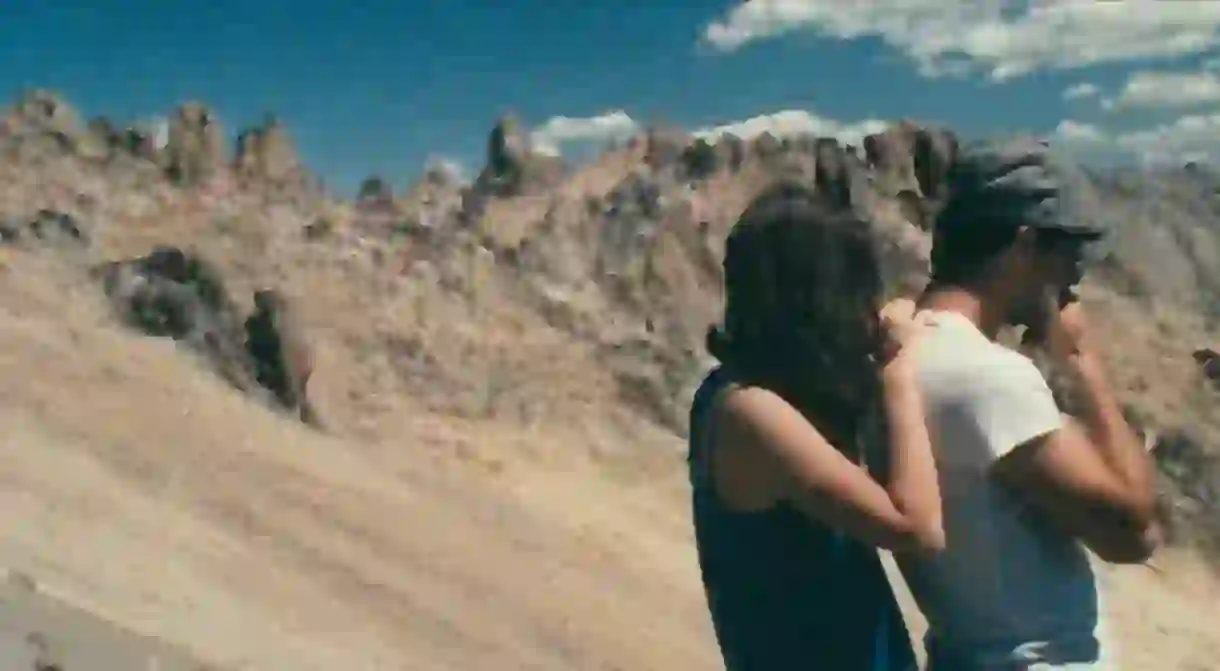Why Patagonia Is More Than 'Somewhere Beautiful'

Why reduce the epic terrain south of the Andes to images when you can commune with it? In Albert Kodagolian’s film Somewhere Beautiful, an emotionally blinkered photographer fails to see with his camera the same Patagonia his girlfriend sees with her eyes.
The late 1980s films made by the Canadian-Armenian director Atom Egoyan showed how anyone who wields a camera participates in an alienating process. Though video was king in those days, Egoyan was a prophet of the mediation of love and desire that the internet turned into a pandemic. Train a camera on a place and you similarly risk losing your connection to it.
One of Egoyan’s followers is Albert Kodagolian (both are sons of Armenians). His debut feature Somewhere Beautiful, a reimagining of Egoyan’s 2003 Calendar, tells the stories of two photographers. One of them (played by Anthony Bonaventura) is so fixated on his camera set-ups while on assignment in Patagonia that he fails to draw any spiritual sustenance from the rugged beauty of its landscape, or to realize that his girlfriend, Elena (María Alche) is drifting away from him.

The other lensman (played by Kodagolian himself), who works in fashion and movies, has returned to L.A. to find that his English wife (Robyn Buck), sick of his workaholic lifestyle, is leaving him and will fight him for custody of their infant daughter. This strand of the movie, shot in 35mm, is as pretentious and irritating as most of its characters. The only people who aren’t jaded, needy, decadent, or navel-gazing are the adorable toddler and her childminder, though why an especially pretty actress (Matilda Anna Ingrid Lutz) was cast in the latter role and made to wear miniskirts is questionable.

Unsurprisingly, it is the Patagonian strand that makes Somewhere Beautiful worth watching. Handsomely filmed in 16mm and grainier than the L.A. footage, it is much more than travelogue-y. Alche (memorable in 2004’s The Holy Girl) plays the girlfriend, whose appreciation of the breathtaking steppes, mountains, and lakes is somehow beyond conscious. They elicit something primal in her.
The nature works on Elena in a way it doesn’t work on her boyfriend, who only wants to photograph it and leave. It is unsurprising that she gravitates to their guide (Pablo Cedrón), an earthy Argentinian critical of the photographer’s lack of research or genuine interest in what he’s shooting. Though he’s not quite a South American Zorba the Greek, the guide slips easily into playing folk songs of love and loss with a gaucho band.

At a crucial moment, Elena invites the photographer to come for a walk while he’s waiting for the right light, but he won’t leave his precious camera. She goes with the guide instead and they share a moment of sensuality—how deep is undisclosed—while climbing down a rock face. Naturalness trumps the manufacturing of images, as Patagonia dwarfs trivial and confining human endeavors.













